

Samadhi - Wikipedia. A state of meditative consciousness in Indian religions Samādhi (Sanskrit: समाधी, also called samāpatti), in Hinduism, Jainism, Buddhism, Sikhism and yogic schools, is a state of meditative consciousness.
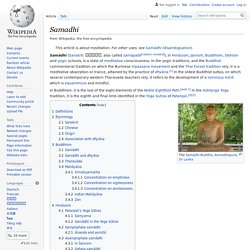
In the yogic traditions, and the Buddhist commentarial tradition on which the Burmese Vipassana movement and the Thai Forest tradition rely, it is a meditative absorption or trance, attained by the practice of dhyāna. In the oldest Buddhist suttas, on which several contemporary western Theravada teachers rely, it refers to the development of a luminous mind which is equanimous and mindful. Definitions[edit] Etymology[edit] Sanskrit[edit] Various interpretations for the term's etymology are possible: Sans titre. Theosis ("deification," "divinization") is the process of a worshiper becoming free of hamartía ("missing the mark"), being united with God, beginning in this life and later consummated in bodily resurrection.
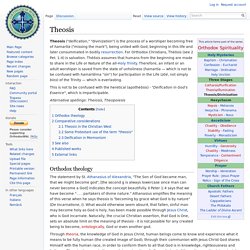
For Orthodox Christians, Théōsis (see 2 Pet. 1:4) is salvation. Théōsis assumes that humans from the beginning are made to share in the Life or Nature of the all-Holy Trinity. Therefore, an infant or an adult worshiper is saved from the state of unholiness (hamartía — which is not to be confused with hamártēma “sin”) for participation in the Life (zōé, not simply bíos) of the Trinity — which is everlasting. This is not to be confused with the heretical (apothéōsis) - "Deification in God’s Essence", which is imparticipable. Omphalopsyque. Un article de Wikipédia, l'encyclopédie libre.
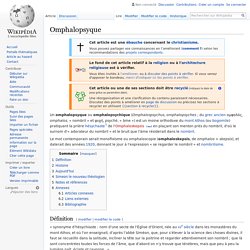
Cet article ou une de ses sections doit être recyclé (indiquez la date de pose grâce au paramètre date). Une réorganisation et une clarification du contenu paraissent nécessaires. Discutez des points à améliorer en page de discussion ou précisez les sections à recycler en utilisant {{section à recycler}}. Hésychasme. Un article de Wikipédia, l'encyclopédie libre.
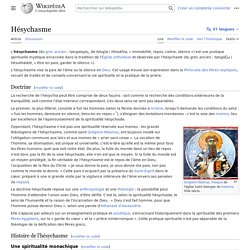
L'hésychasme (du grec ἡσυχασμός, hesychasmos, de ἡσυχία, hesychia, « l'immobilité, le repos, calme, le silence ») est une pratique spirituelle mystique enracinée dans la tradition de l'Église orthodoxe et observée par l'hésychaste (en grec ἡσυχάζω, hesychadzo, « être en paix, garder le silence »). L'hésichasme vise la paix de l'âme ou le silence en Dieu. Cet usage trouve son expression dans la Philocalie des Pères neptiques, recueil de traités et de conseils concernant la vie spirituelle et la pratique de la prière.
Doctrine[modifier | modifier le code] Femininity in Tamrielic Faith Part 4: Nordic Goddesses beyond Shor Son of Shor : teslore. Femininity in Tamrielic Faith Part 3: Dibella : teslore. Femininity in Tamrielic Faith Part 1: Mara : teslore. Femininity in Tamrielic Faith Part 2: Kyne : teslore. Arbre de Vie (Kabbale) L’Arbre de Vie (Etz haHa'yim עץ החיים en hébreu) représente symboliquement, dans la Kabbale, les lois de l'Univers (certains auteurs le rapprochent de l'arbre de la vie mentionné par la Genèse en 2:9).
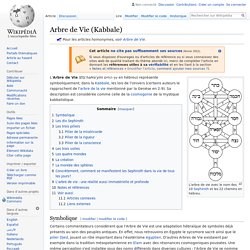
Sa description est considérée comme celle de la cosmogonie de la mystique kabbalistique. Certains commentateurs considèrent que l'Arbre de Vie est une adaptation hébraïque de symboles déjà présents au sein des peuples antiques. En effet, nous retrouvons en Égypte le sycomore sacré ainsi que le pilier Djed, jouant un rôle important dans l'ésotérisme égyptien. D'autres Arbres de Vie existaient par exemple dans la tradition mésopotamienne en Elam avec des résonances cosmogoniques poussées.
Kabbale. La Kabbale (de l'hébreu קבלה Qabbala « réception », forme anglicisée écrite plutôt Cabbale ou Qabale en français) est une tradition ésotérique du judaïsme, présentée comme la « Loi orale et secrète » donnée par YHWH (Dieu) à Moïse sur le mont Sinaï, en même temps que la « Loi écrite et publique » (la Torah).
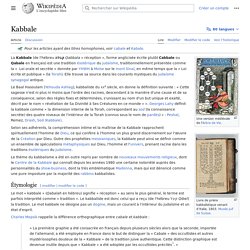
Elle trouve sa source dans les courants mystiques du judaïsme synagogal antique. Le thème du kabbalisme a été en outre repris par nombre de nouveaux mouvements religieux, dont le Centre de la Kabbale qui connaît depuis les années 1980 une certaine notoriété auprès des personnalités du show-business, dont la très emblématique Madonna, mais qui est dénoncé comme imposture par les rabbins traditionalistes. Sommaire. KingBeron comments on How Do The Orsimer View Boethiah? Dreamtime. Stencil art at Carnarvon Gorge, supposedly showing "unique clan markers and dreamtime stories symbolising attempts to catch the deceased's spirit".

[citation needed] Dreamtime (also dream time, dream-time) is a term for the animist framework and symbol system of Australian Aboriginal mythology, introduced by anthropologist A. P. Elkin in 1938 and popularised by anthropologist William Edward Hanley Stanner and others from the 1970s for a concept of "time out of time", or "everywhen", inhabited by ancestral figures, often of heroic proportions or with supernatural abilities, but not considered "gods" as they do not control the material world and are not worshipped.[1] Aboriginal mythology and culture[edit] Waugals (yellow triangles with a black snake in the centre) are the official Bibbulmun Track trailmarkers between Kalamunda and Albany in Wester Australia. The term "Dreaming" is directly based on the term Altjira (Alchera), the name of a spirit or entity in the mythology of the Aranda.
Kathenotheism. Kathenotheism is a term coined by the philologist Max Müller to mean the worship of one god at a time.
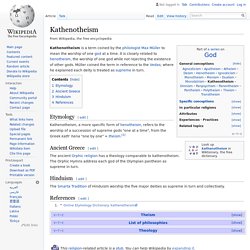
It is closely related to henotheism, the worship of one god while not rejecting the existence of other gods. Müller coined the term in reference to the Vedas; where he explained each deity is treated as supreme in turn. A Nocturnal Emission : teslore. Peryite Information Megathread 2.0 : teslore. The Shadow of Aka: Peryite : teslore. Merry Eyesore the Elk — Excerpt from a TESV: Skyrim design document, with... Lore:Aspects of Lord Hircine - UESPWiki. Oral Traditions of the Reachmen, Number 5 Transcribed statement detailing the five aspects of the Daedric Prince Hircine The following is the transcribed statement of a shaman of Druadach who named himself Uraccanach the Witchman: "Like the fingers of your hand, like the clutch of the hagraven, like the arrows to kill a bear, Five are the Aspects of Lord Hircine.
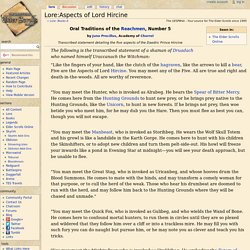
You may meet any of the Five. All are true and right and death-in-the-woods. "You may meet the Hunter, who is invoked as Alrabeg. "You may meet the Manbeast, who is invoked as Storihbeg. "You man meet the Great Stag, who is invoked as Uricanbeg, and whose hooves drum the Blood Summons. "You may meet the Quick Fox, who is invoked as Gulibeg, and who wields the Wand of Bone. "You may meet the Mighty Bear, who is invoked as Hrokkibeg. "These are the Five—there are no more, and any who say so are witless and foolish. A Short Study on Ayleidic Symbolism.